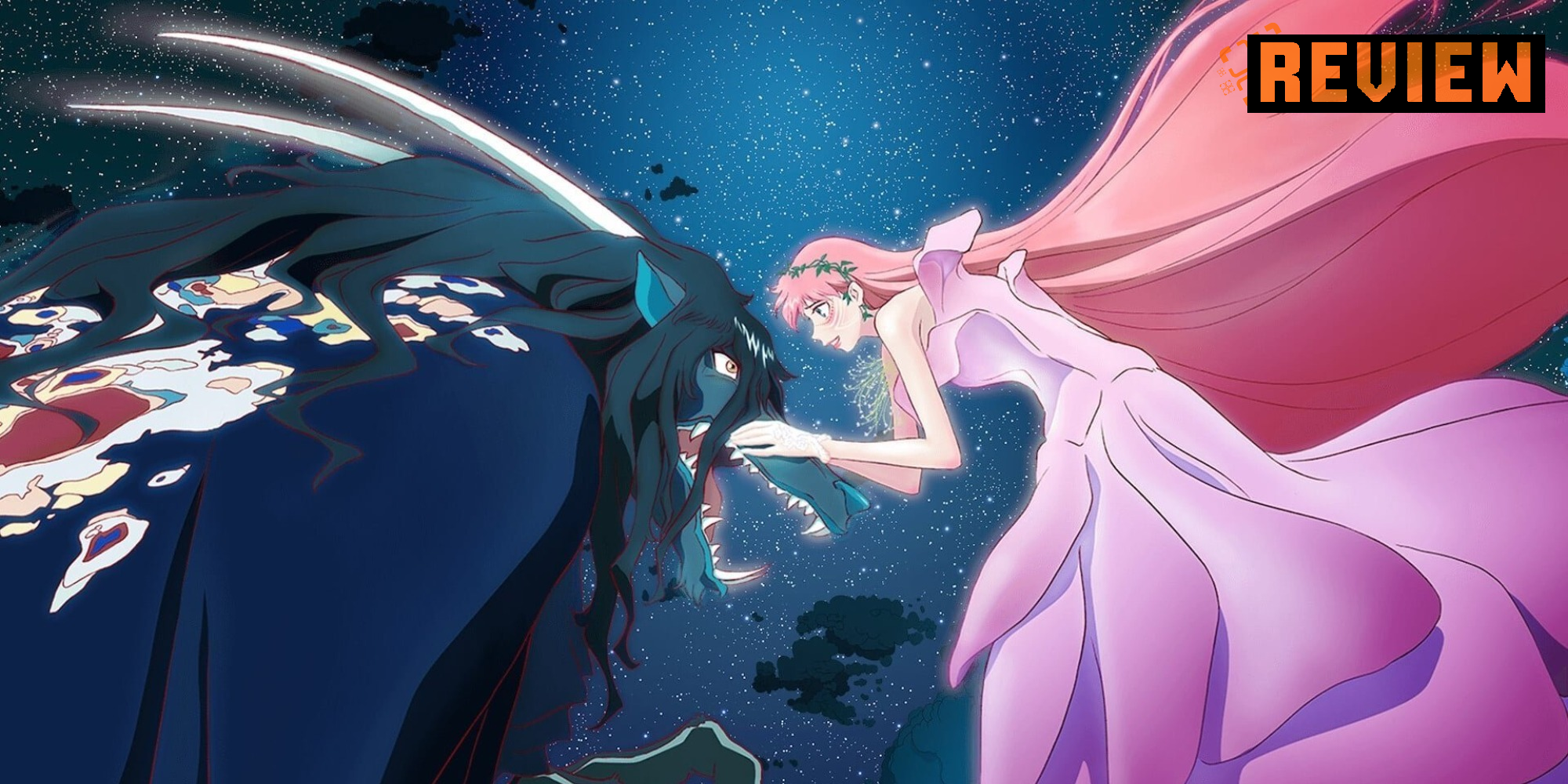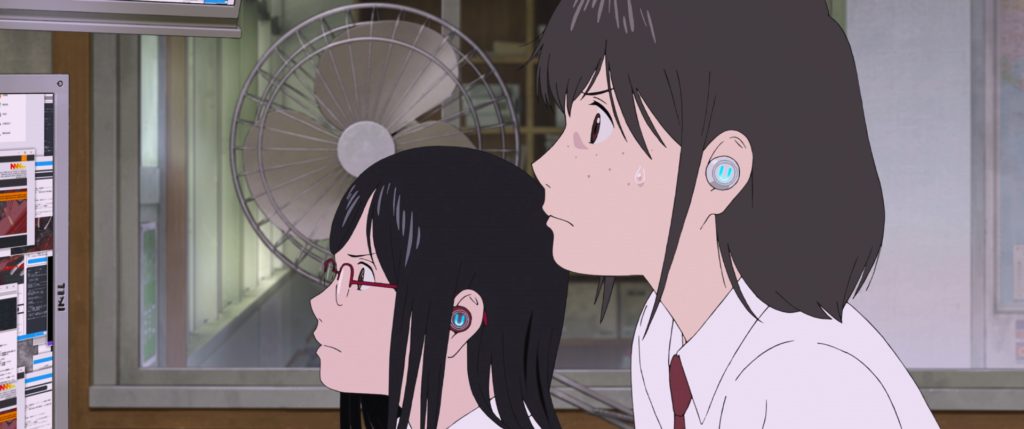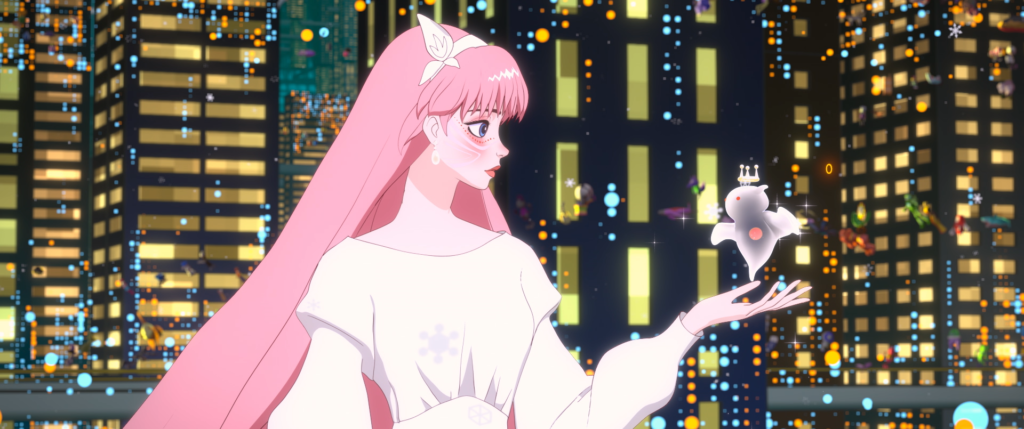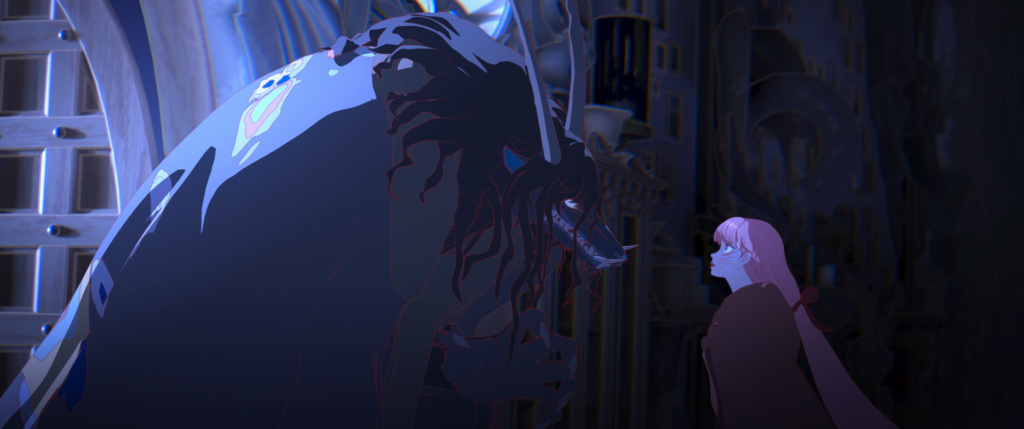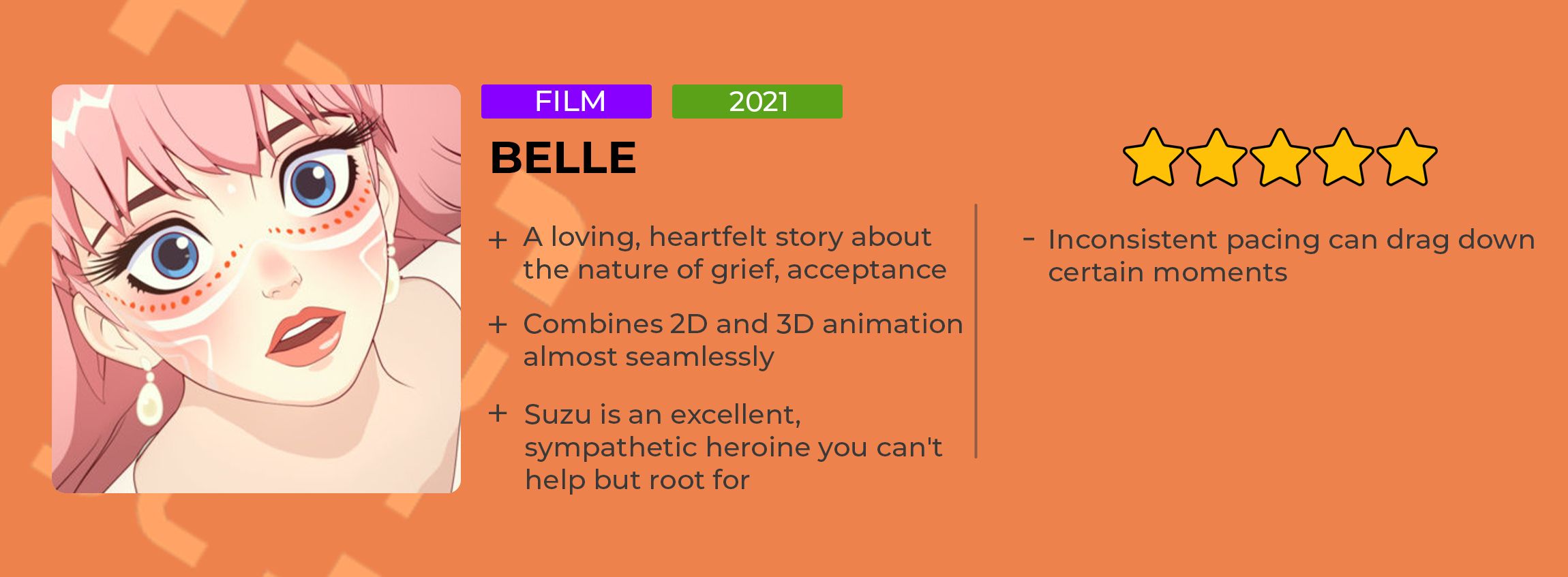Belle tells a story of grief, loss, and eventual acceptance. Mamoru Hosoda builds upon the themes first explored in his earlier films Wolf Children, Mirai, and Summer Wars to create a cinematic adventure that isn’t quite his finest work, but still a testament to his talent and how animation remains a storytelling medium like no other.
Suzu Naito is a high school student who is the picture of anxiety. After losing her mother at a young age, she becomes withdrawn, melancholic, and unwilling to socialise with the few friends and family she has left. Grief has destroyed her, ridding life of its purpose and love for things she once held dear. Existence is meaningless to her, and human connection is not worth investing in as it can so easily be torn away. It’s heartbreaking, with Hosoda unafraid to show the consequences of grief and how nobody experiences it in the same way. There is no right way to feel when a loved one is snatched away, and that’s beautiful.
But much like Wolf Children and Mirai before it, tragic experiences are lined with a sense of wonder, a bastion of hope that principal characters can cling onto and make something of themselves, to be better people and appreciate that, despite all its flaws, life is worth living. For Suzu, this comes in the form of a futuristic online world known as U. This application reads a person’s biometric data and turns them into their ideal self, forgoing concepts of gender, appearance, and societal upbringing to be true to everyone’s inner feelings.
Suzu signs in on a whim and finds herself transformed into Belle, a majestic popstar with an angelic voice who immediately takes the world of U by storm. Her serene voice becomes a global phenomenon, all those behind the screen keenly unaware that its origins sit with a young woman with a fleeting grasp on her own value as a person. Her first steps into the world of U have her burst into song, the lyrics running down the struggle of losing someone, and the desperation to be held and cared for by a person who isn’t here anymore. It’s an outpouring of emotion that she doesn’t have in the real world, her confidence lost to a muted appearance and a perpetual sadness that the film slowly strips away to reveal something better.
Belle was described to me as a modern retelling of Beauty and the Beast, but it isn't a romantic tale, at least not a conventional one. The Beast is another individual stricken by grief, his background and purpose a mystery to all those who encounter him. Much like the classic story, he’s misunderstood and violent, prone to outbursts because he’s afraid that nobody will ever understand him. Belle is in a similar boat, the dichotomy of their experiences bringing them closer together as they grow as people, even if the future seems uncertain.
He gains a reputation across the realm of U while an overly confident group of capitalist rebels hunt him down because his true appearance isn’t beautiful and transcendent, but a sharp-toothed creature with ragged fur and a back adorned with harsh bruises. I won’t spoil things here, but the bond between Belle and the Beast evolves into a poignant subversion of romance that isn’t afraid to deconstruct the cycles of grief and trauma in ways that few animated films have before, showing how imperfect the world can be and why it’s so important to recognise that. Just be warned that it does get heavy, but necessarily so.
The film transitions between traditional hand-drawn animation and CG almost seamlessly, with the latter used to express the world of U while reality retains the iconic style of Hosoda’s other work. The internet is bursting with unorthodox designs and fluorescent colours courtesy of Cartoon Saloon, Jin Kim, and Eric Wong - with it being abundantly clear that anything is possible in this whimsical place. Belle’s first concert takes place on the back of a floating whale adorned with all manner of overzealous speakers, shimmering fireworks bursting from his body and turning the digital sky into a rainbow of everchanging brilliance.
Reality in the film is infinitely more humble with advanced technology not taking away from the grounded nature of Japan’s countryside. We watch Suzu as she spends her evenings practicing singing by the river or sleeping her depression away in a house that feels so comforting, its homely nature emphasised by a level of detail only made possible by traditional means. Her design and that of those around her possess a level of realism that you wouldn’t expect from animation, with subtle details such as hair colour, facial features, and the way certain characters carry themselves making all of them matter and feel like people you’d see in our own society. They’re all flawed, ambitious, and hurt, but they want the best for those they care for.
Suzu is paranoid about her freckles, an adorable part of her appearance that transfers over to Belle. It’s one of the only parts of her that exists in U, and even there she views it as something to be ashamed of. She’s wrong, and Hosoda makes a concerted effort to emphasize the importance of self acceptance, and how the online world can often provide us the courage to confront our own vices and begin to lean on the help of those in our personal lives. Suzu begins the film withdrawn and hopeless, but she grows into someone she can be proud of, finding her voice and forming bonds with those she would have once pushed away.
Not everything is magically fixed, but she’s taking steps towards a better life, mirroring how I and so many others have learned to love ourselves again in the aftermath of adversity. Anime is a medium that is so often defined by needless tropes, but Hosoda has once again produced a film that subverts them in such magnificent ways, while expanding upon the themes of adolescence, motherhood, and family that makes all of his work so special.
Belle can flounder in its pacing at times, often running through characters and events far too quickly for its own good, but it slows down at just the right moments, culminating in a final act that left me tearing up at everything it had to say, and how effectively it was able to explore the ideas of grief, love, loss, and acceptance without bordering on saccharine sweetness. Mamoru Hosoda is one of the finest directors working in animation today, and Belle is another gem in a crown that continues to shine ever brighter.
Score: 5/5

